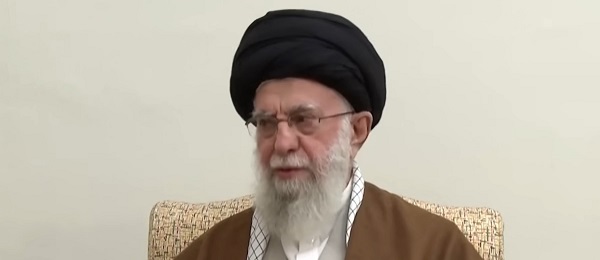Alberta
Province freezes funds for doctors and launches process to work out a new funding formula

New physician funding framework announce
Alberta will maintain physician funding at $5.4 billion, the highest level ever, and implement its final offer to the Alberta Medical Association (AMA) to avoid $2 billion in cost overruns.
Existing terms will remain in place until March 31, 2020. A new funding framework will then be introduced, in a multi-year process that will require consultation with the AMA at all stages. The new framework will make changes proposed during negotiations to prevent cost overruns, align benefit programs and administrative fees with those of comparable provinces, and improve services for patients.
The eleven consultation proposals will also be implemented on March 31. This includes phasing in changes to complex modifiers, reducing the rate physicians can charge for this billing code to $9 from $18, for a period of one year before the code is removed in 2021-22. In summer 2020, at the direction of the Minister of Health, the Government of Alberta will also introduce a new alternative relationship plan (ARP) with built-in transition benefits to encourage physicians to move from fee-for-service to a three-year contract.
“Our province is facing cost overruns of $2 billion in the next three years due solely to physician compensation. If left unaddressed, these costs would impede efforts to reduce surgical wait times, improve mental health and addiction services, and expand the number of continuing care beds. Despite repeated efforts, the AMA failed to put forward alternatives that would hold the line on physician compensation. The new framework announced today will prevent cost overruns, allow our province to improve services for patients, and still ensure that Alberta’s doctors are amongst the highest paid physicians in all of Canada.”
Background
- The new funding framework will maintain government’s current level of spending on physicians at $5.4 billion.
- The new funding framework avoids anticipated cost overruns of $2 billion over the next three years.
- Alberta has been spending more on physician salaries than other provinces, yet most of its health outcomes are below national averages.
- A doctor in Alberta earns approximately $90,000 more than a doctor in Ontario and physicians’ fees have almost tripled since 2002.
Elements of the new funding framework
- Changes to Alberta’s complex modifier billing system. The rate physicians are able to charge for complex modifiers will be reduced to $9 from $18 for a period of one year before this billing code is removed in 2021-22. Once the new framework is fully phased in, physicians will be able to bill an additional fee after spending 25 minutes with a complex patient case. Alberta remains the only province in Canada that allows for a top-up payment for complex visits.
- Removal of the comprehensive annual care plan from the list of insured services. Currently, physicians can also bill for a similar consultation called a comprehensive annual visit. No other province in Canada compensates physicians twice for annual care consultation.
- Implementation of a new daily cap, modelled after a cap in place in British Columbia, of 65 patients per day. Large patient loads can contribute to physician burnout and may compromise patient safety and quality of care.
- Removing physician overhead subsidies from all hospital-based services. Physicians who work in AHS facilities should not be billing for overhead costs that their community physician colleagues face, such as leases, hiring staff and purchasing equipment.
- Ending of clinical payments, or stipends, by AHS to physicians. This change ends duplication of payments to contracted physicians.
Timeline
- In September 2019, government provided notice to the AMA that it intended to begin negotiations on the AMA Agreement. The notification provided time for the AMA to prepare its proposals.
- In November 2019, negotiations began with the AMA to reach a new agreement; government began consultations on 11 proposed changes to the schedule of medical benefits (SOMB, or “insured services”).
- In January 2020, negotiations and consultations proceeded with no agreement reached. Mediation, on both the negotiation and consultation proposals, began January 31 and continued into February.
- The parties were not able to reach an agreement during mediation.
- Government will implement its final offer from the negotiating table, including the 11 consultation proposals, on March 31.
Alberta
Alberta Provincial Police – New chief of Independent Agency Police Service

Sat Parhar has been appointed as the first chief of the Independent Agency Police Service, marking the next step toward a new municipal policing option.
The appointment of a new chief for the Independent Agency Police Service (IAPS) marks the next step in giving municipalities a new option for local policing and builds on the work already underway for the agency to assume the police-like duties currently carried out by the Alberta Sheriffs. The IAPS will empower municipalities to adopt strategies that effectively respond to their specific safety concerns, enhancing public safety across the province.
Chief Parhar brings more than 25 years of policing experience, including senior roles with the Calgary Police Service, most recently as deputy chief. His frontline policing experience and deep understanding of Alberta’s complex and diverse public safety landscape positions him to lead the agency as it takes shape and begins its work as a new municipal policing option, keeping communities safe.
Once operational, the agency will strengthen Alberta’s existing policing model and complement the province’s current police services, which includes the RCMP, Indigenous policing services and municipal police. It will help fill gaps and ensure law enforcement resources are deployed efficiently to meet Alberta’s evolving public safety needs and improve law enforcement response times, particularly in rural communities.
“Appointing Chief Sat Parhar is a key milestone in Alberta’s plan to give municipalities a real choice in how their communities are kept safe. This is about building a modern police service that reflects the priorities of Albertans, strengthens local decision-making, and ensures every corner of our province, especially rural areas, can count on responsive, effective law enforcement. With his decades of experience and deep understanding of Alberta’s policing landscape, he is the right leader to bring this vision to life.”
“This appointment signifies a significant step forward in our efforts to establish a more robust, community-focused policing model that is better equipped to meet the unique needs of our local residents. Under Chief Parhar’s visionary leadership, we are confident that we will develop a modern, efficient police service that not only enhances public safety but also aligns closely with the priorities and values of Albertans. His experience and commitment are vital in shaping an IAPS that is responsive, transparent, and dedicated to fostering trust and collaboration within the community, ultimately ensuring a safer and more connected society for all.”
Chief Parhar’s immediate priorities will be to hire an executive team and commence organizational planning such as developing key recruitment, training and other operational policies. Chief Parhar’s appointment is the first step of many to establishing the IAPS.
“It’s an honour to take on this role and help shape a modern police service built for Alberta. My focus from day one will be on setting high standards for professionalism, building strong relationships with our partners and ensuring this service reflects the needs and priorities of the communities we serve.”
The Independent Agency Police Service was formally created through regulation following the passing of Public Safety Statutes Amendment Act, 2024. The agency will operate as an independent Crown corporation, and will be renamed the Alberta Sheriffs Police Service, with its head office located in Calgary. The IAPS will be operationally independent from the provincial government with civilian oversight, consistent with all police services in Alberta.
“When it comes to policing, municipalities like ours deserve a choice – especially when the current system leaves us disadvantaged simply because of our size. We look forward to learning more about what that alternative will look like once an Alberta police agency is fully established and the options are clear. For us, this is about fairness, sustainability, and ensuring municipalities have access to policing solutions that reflect both their needs and their realities.”
Quick facts
- The regulation establishes the IAPS Provincial Corporation and its governance structure including board of directors, board of director powers, financial responsibilities and accountabilities.
Related news
- Expanding municipal police service options (April 7, 2024)
Alberta
Pierre Poilievre – Per Capita, Hardisty, Alberta Is the Most Important Little Town In Canada

From Pierre Poilievre
-

 Crime2 days ago
Crime2 days agoNational Health Care Fraud Takedown Results in 324 Defendants Charged in Connection with Over $14.6 Billion in Alleged Fraud
-

 Health2 days ago
Health2 days agoRFK Jr. Unloads Disturbing Vaccine Secrets on Tucker—And Surprises Everyone on Trump
-

 Business1 day ago
Business1 day agoElon Musk slams Trump’s ‘Big Beautiful Bill,’ calls for new political party
-

 International22 hours ago
International22 hours agoCBS settles with Trump over doctored 60 Minutes Harris interview
-

 Business15 hours ago
Business15 hours agoLatest shakedown attempt by Canada Post underscores need for privatization
-

 Business15 hours ago
Business15 hours agoWhy it’s time to repeal the oil tanker ban on B.C.’s north coast
-

 Censorship Industrial Complex1 day ago
Censorship Industrial Complex1 day agoGlobal media alliance colluded with foreign nations to crush free speech in America: House report
-

 Aristotle Foundation23 hours ago
Aristotle Foundation23 hours agoHow Vimy Ridge Shaped Canada






